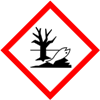CAS Number 52-51-7, Bronopol BP Ph Eur Grade and Bronopol 50% Solution Manufacturers Exporters
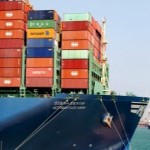
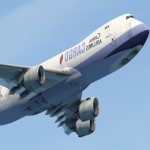
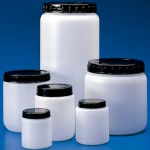
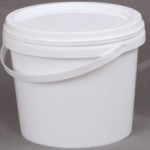
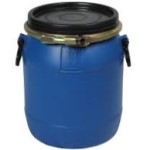
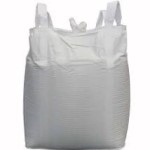
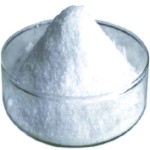
CAS Number 52-51-7, Bronopol or 2-Bromo-2-nitropropane-1,3-diol or 2-bromo-2-nitro-1,3-propanediol Manufacturer Exporter
For Properties Specifications of Bronopol Click Properties, Specifications of Bronopol Manufacturer.
For Uses of Bronopol Click Uses of Bronopol Manufacturer.
For For SDS MSDS Sheet of Bronopol Click SDS Safety Data Sheet MSDS Sheet of Bronopol Manufacturer.
The Properties and Specifications of Bronopol:
Specifications of Bronopol BP Ph Eur Grade:
C3H6BrNO4 --- 200.0 --- CAS 52-51-7
Action and use: Antibacterial preservative.
DEFINITION
Bronopol is 2-bromo-2-nitropropane-1,3-diol. It contains not less than 99.0% and not more than 101.0% of C3H6BrNO4, calculated with reference to the anhydrous substance.
CHARACTERISTICS
White or almost white crystals or crystalline powder.
Freely soluble in water and in ethanol (96%); slightly soluble in glycerol and in liquid paraffin.
IDENTIFICATION
A. The infrared absorption spectrum is concordant with the reference spectrum of bronopol.
B. Dissolve 0.1 g in 10 mL of water, add 10 mL of 7.5M sodium hydroxide and, carefully with constant stirring and cooling, 0.5 g of nickel-aluminium alloy. Allow the reaction to subside, filter and carefully neutralise with nitric acid. The resulting solution yields reaction A characteristic of bromides.
C. Melting point, after drying over phosphorus pentoxide at a pressure not exceeding 0.7 kPa, about 130C.
TESTS
Acidity or alkalinity: pH of a 1% w/v solution, 5.0 to 7.0.
Related substances: To pass the test.
Sulfated ash: Not more than 0.1%.
Water: Not more than 0.5% w/w.
We also offer Bronopol 50% Solution.
The Uses of Bronopol:
Bronopol or 2-bromo-2-nitropropane-1,3-diol is an organic compound that is used as an antimicrobial. It is a white solid although commercial samples appear yellow. It has low mammalian toxicity at in-use levels and high activity against bacteria, especially Gram-negative species.
The MSDS-SDS Hazard Statement of Bronopol:
Bronopol or 2-Bromo-2-nitropropane-1,3-diol or 2-bromo-2-nitro-1,3-propanediol SDS, Safety Data Sheet
MSDS Sheet, Material Safety Data Sheet 03-May-25
1. Product Identification
Product Name & Other Names: Bronopol or 2-Bromo-2-nitropropane-1,3-diol or 2-bromo-2-nitro-1,3-propanediol.
CAS No.: 52-51-7
EINECS EC-No.: 200-143-0
Relevant uses and uses advised against (if any): Industrial use only.
2. Hazards Identification
GHS, Globally Harmonized System Classification in accordance with 29 CFR 1910
Classification according to Regulation (EC) No 1272/2008
Acute toxicity, Oral Category 4 - H302
Acute toxicity, dermal Category 4 - H312
Skin irritation Category 2 - H315
Skin corrosion/irritation Category 2 - H318
Specific target organ toxicity - single exposure Category 3, Respiratory system - H335
Long-term (chronic) aquatic hazard Category 1, H410
Labeling according to Regulation (EC) No 1272/2008
GHS Label Elements  Corrosive |
GHS Label Elements |
Signal Words: Danger
Hazard statements:
H302: Harmful if swallowed.
H312: Harmful in contact with skin.
H315 Causes skin irritation.
H318: Causes serious eye damage.
H335 May cause respiratory irritation.
H410 Very toxic to aquatic life with long lasting effects.
Precautionary statements:
P261: Avoid breathing dust/fume/gas/mist/vapors/spray.
P262: Do not get in eyes, on skin, or on clothing.
P270 Do not eat, drink or smoke when using this product.
P271: Use only outdoors or in a well-ventilated area.
P280: Wear protective gloves/protective clothing/eye protection/face protection.
P301+P312: IF SWALLOWED: Call a POISON CENTER or doctor/physician if you feel unwell.
P302+352: IF ON SKIN: Wash with soap and water.
P332+313: If skin irritation occurs: Get medical advice/attention.
P304+340: IF INHALED: Remove victim to fresh air and keep at rest in a position comfortable for breathing.
P305+P351+P338: IF IN EYES: Rinse cautiously with water for several minutes. Remove contact lenses, if present and easy to do. Continue rinsing.
P337+P313: If eye irritation persists: Get medical advice/ attention.
3. Composition/Information on Ingredients
Product Name & Other Names: Bronopol or 2-Bromo-2-nitropropane-1,3-diol or 2-bromo-2-nitro-1,3-propanediol.
CAS No.: 52-51-7
EINECS EC-No.: 200-143-0
4. First Aid Measures
Always seek medical attention after first aid measures are provided.
Inhalation: If inhaled, remove to fresh air. If not breathing, give artificial respiration. If breathing is difficult, give oxygen. Get medical attention.
Ingestion: Give large amounts of water to drink. Never give anything by mouth to an unconscious person. Get medical attention.
Skin Contact: Immediately flush skin with plenty of water for at least 15 minutes. Remove contaminated clothing and shoes. Get medical attention. Wash clothing before reuse.
Eye Contact: Check for and remove any contact lenses. Immediately flush eyes with running water for at least 15 minutes, keeping eyelids open. Get medical attention.
5. Fire Fighting Measures
Auto ignition temperature: High heat or direct flame is necessary to cause ignition.
Specific Hazards Arising from the Chemical: Dust can form an explosive mixture with air. Do not allow run-off from firefighting to enter drains or water courses. Fine dust dispersed in air may ignite.
Fire Extinguishing Media: Use water spray, alcohol-resistant foam, dry chemical, or carbon dioxide. Avoid solid stream of water. Water spray may be used to keep fire exposed containers cool. Carbon dioxide and carbon monoxide, Nitrogen oxides (NOx), Hydrogen bromide will be formed on combustion.
Special Information: In the event of a fire, wear full protective clothing and NIOSH-approved self-contained breathing apparatus with full face piece operated in the pressure demand or other positive pressure mode.
6. Accidental Release Measures
Personal precautions, protective equipment, and emergency procedures: Avoid breathing dust/fumes/gas/mist/vapors/spray. Use individual protective equipment (waterproof boots, suitable protective clothing, safety glasses, etc.).
Environmental precautions: Do not let the product enter drains, soil or water sources.
Methods and materials used for containment Cleanup procedures and Storage: Keep away from heat. Keep away from sources of ignition. Stop leak if without risk. Pick up and dispose of as hazardous waste. Keep in suitable, closed containers for disposal.
7. Handling and Storage
Precautions for safe handling: Apply according to good manufacturing and industrial hygiene practices. Ensure proper ventilation. Wash thoroughly after handling. Do not drink, eat, or smoke while handling. Avoid contact with skin, eyes, and clothing. Minimize dust generation. Avoid breathing dust/fumes/gas/mist/vapors/spray. Keep container tightly closed. Avoid ingestion and inhalation. Use individual protective equipment (waterproof boots, suitable protective clothing, safety glasses, etc.).
Conditions for safe storage, including any incompatibilities: Store in cool, dry, and ventilated area away from heat sources and protected from sunlight in tightly closed original container. Keep air contact to a minimum. Store protected from heat, sparks and ignition sources and incompatible materials. Avoid contact with skin and eyes. Avoid inhalation of dust/mist/vapor. Do not store with incompatible materials like strong oxidizing agents, strong acids, and strong bases. Light sensitive.
8. Exposure Controls/Personal Protection
Airborne Exposure Limits: Not established. Keep below 5 mg/m3.
Ventilation System: A system of local and/or general exhaust is recommended to keep employee exposures low.
Personal Respirators (NIOSH Approved): Use only under a chemical fume hood. For emergencies, or instances where the exposure levels are not known, use a full-face piece positive-pressure, air-supplied respirator.
Skin Protection: Wear impervious protective clothing, including boots, gloves, lab coat, apron or coveralls, as appropriate, to prevent skin contact.
Eye Protection: Use chemical safety goggles and/or a full face shield where splashing is possible. Maintain eye wash fountain and quick-drench facilities in work area.
Other Control Measures: Maintain good housekeeping in work area. Handle in accordance with good industrial hygiene and safety practice.
9. Physical and Chemical Properties
Appearance: White to pale yellow crystalline powder.
Odor: Odorless.
Odor threshold: Not applicable.
pH: 5 to 7
Relative density: around 1.1
Boiling Point: Decomposes.
Melting Point: 130C literature.
Flash point: No information found.
Auto-ignition temperature: No information found.
Decomposition temperature: 140C.
Upper/lower flammability or explosive limits: No information found.
Vapor Density (Air=1): No information found.
Vapor Pressure (mm Hg): No information found.
Evaporation Rate (BuAc=1): No information found.
Flammability (solid, gas): No information found.
Partition coefficient: n-octanol/water: No information found.
Solubility: Soluble in water and ethanol.
Viscosity: No information found.
10. Stability and Reactivity
Stability: Stable under ordinary conditions of use and storage.
Hazardous Decomposition Products: Fumes, Carbon dioxide and carbon monoxide, Nitrogen oxides (NOx) and Hydrogen bromide may form when heated to decomposition.
Hazardous Polymerization: Unlikely to happen.
Incompatibilities: Strong oxidizing agents, Strong acids and Strong bases.
Conditions to Avoid: Heat, flames, ignition sources and incompatibles. Avoid dust formation, Excess heat. Exposure to light and Exposure to atmosphere.
11. Toxicological Information
Oral rat LD50: 305 mg/kg.
Dermal rat LD50: 1.600 mg/kg.
Mutagenic Effects: No information found.
Teratogenic Effects: No information found.
Developmental Toxicity: No information found.
Carcinogenicity: No component of this product present at levels greater than or equal to 0.1% is identified as probable, possible or confirmed human carcinogen by IARC, ACGIH, OSHA, NTP.
12. Ecological Information
Very toxic to aquatic life with long lasting effects.
Toxicity to fish: LC50 - Oncorhynchus mykiss (rainbow trout) - 41,2 mg/l - 96 h.
Toxicity to daphnia and other aquatic invertebrates: static test EC50 - Daphnia magna (Water flea) - 1,4 mg/l - 48 h.
Persistence and Degradability: Persistence is unlikely due to water solubility.
Mobility: Mobility likely due to water solubility.
Results of PBT and vPvB assessment: No data found.
13. Disposal Considerations
Whatever cannot be saved for recovery or recycling should be managed in an appropriate and approved waste disposal facility.
14. Transport Information
Land Transport DOT USA, TDG Canada & ADR/RID Europe:
UN number: 3241; Transport hazard class(es): 4.1; Packing group: III
UN proper shipping name: 2-Bromo-2-nitropropane-1,3-diol
Sea Transport IMDG/IMO:
UN number: 3241; Transport hazard class(es): 4.1; Packing group: III
UN proper shipping name: 2-Bromo-2-nitropropane-1,3-diol
Air Transport IATA/ICAO:
UN number: 3241; Transport hazard class(es): 4.1; Packing group: III
UN proper shipping name: 2-Bromo-2-nitropropane-1,3-diol
15. Regulatory Information
USA:
SARA 311/312 Hazards: Chronic Health Hazard. Corrosive, Harmful, Irritant.
California Prop. 65 Components: Not listed.
16. Other Information
DISCLAIMER: The information and recommendations set forth herein are presented in good faith and believed correct as of the date hereof. It is compiled from various sources, and it is not necessarily all inclusive nor fully adequate in every circumstance. In addition, these suggestions should not be confused with nor followed in violation of applicable laws, regulations, rules, or insurance requirements applicable. This SDS MSDS sheet is intended only as a guide to the appropriate precautionary handling of the material by a professionally trained person using this product. Individuals receiving the information must exercise their independent judgment in determining its appropriateness for a particular purpose. This shall not constitute a guarantee for any specific product features and shall not establish a legally valid contractual relationship. In no case shall our company be liable to loss or damages by the product user.
Anmol Chemicals & Pharmaceuticals Pvt. Ltd. is an off-shoot of Anmol Chemicals Taloja. It is located in MIDC Taloja and it is manufacturing pharmaceutical grades of API, Excepients, Food grade and Reagent grade chemicals. Anmol Chemicals & Pharmaceuticals Pvt. Ltd. is a several decades old group of companies, engaged in manufacturing, supplying, distributing, wholesale supplies for actual users, retail or small pack supplies for research and development chemicals, fine and speciality chemicals, pharmaceutical excipients, mineral fortifiers in chemically pure, Analytical reagent grade, IP BP USP Ph Eur EP JP and other pharmaceutical grade monograph including FCC Food grade chemicals and Nutraceuticals, Mineral Fortifiers at best prices.
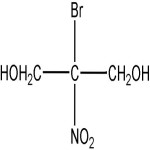
Bronopol Structure
CAS Number 52-51-7, Bronopol or 2-Bromo-2-nitropropane-1,3-diol or 2-bromo-2-nitro-1,3-propanediol Manufacturer Exporter
ANMOL CHEMICALS & PHARMACEUTICALS Pvt. Ltd.
India, USA, Europe, UAE
TELEPHONE: +912223770100
Navi Mumbai, INDIA
e-mail: info(At the rate i.e. @)anmol.org
Copyright. 3-may-25
We manufacture:


